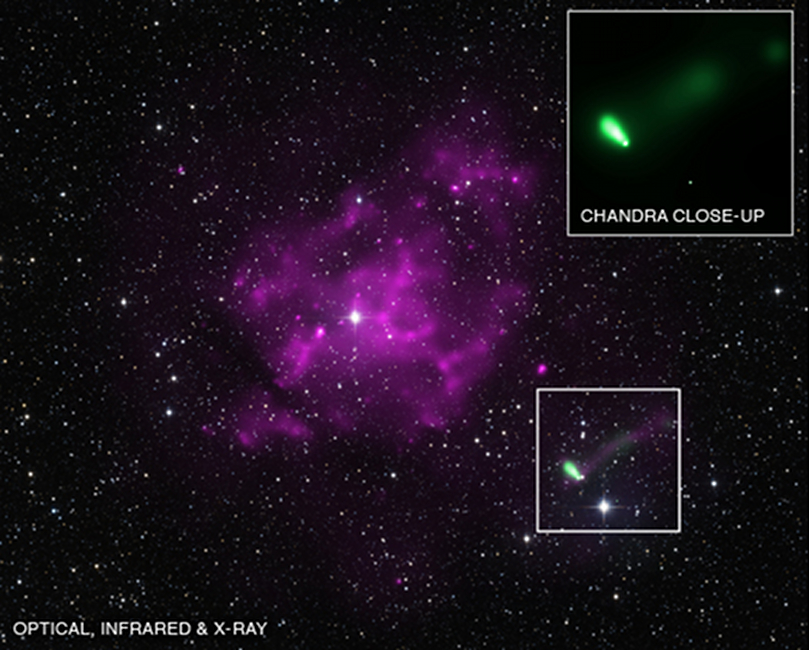
 Credit: X-ray: NASA/CXC/UC Berkeley/J.Tomsick et al & ESA/XMM-Newton, Optical: DSS; IR: 2MASS/UMass/IPAC-Caltech/NASA/NSF
Credit: X-ray: NASA/CXC/UC Berkeley/J.Tomsick et al & ESA/XMM-Newton, Optical: DSS; IR: 2MASS/UMass/IPAC-Caltech/NASA/NSF
Escaping the Explosion
Massive stars, those at least 8 times the mass of the sun, explode violently when they run out of nuclear fuel. These explosions happen when the center of the star, a tiny core less than one millionth of the size of the star, collapses. The outer layers of the star fall upon it, and rebound outward in a violent explosion. These outer layers blast into space, forming a hot debris field called a supernova remnant. The core itself is crushed to unbelievably high densities, forming a neutron star or black hole. If the collapse happens symmetrically all around the star, then the core should remain at roughly the center of the debris field. But if the collapse is asymmetrical, it's possible that the tiny, dense core is accelerated in a particular direction. The image above is a composite X-ray and optical image of a young supernova remnant called SNR MSH 11-16A. The X-ray image is in purple and green, while the optical image is in white. X-rays glow from the hot debris field created by the explosion; but there's also an interesting X-ray emitting object near the lower right (and highlighted in the inset "Chandra close-up" image): a "comet-shaped" object whose tail seems to point to the center of the supernova remnant. Astronomers suspect that this weird object is the hot core of the exploded star which was ejected from the debris field during the explosion. If so, the estimated distance to the supernova remnant, and its estimated age, would make this object the fasted-moving neutron star yet discovered, whizzing through space at speeds up to 6.5 million miles per hour.
Published: August 6, 2013
<
HEA Dictionary ● Archive
● Search HEAPOW
● Other Languages
● HEAPOW on Facebook
● Download all Images
● Education ● HEAD
>

Each week the HEASARC
brings you new, exciting and beautiful images from X-ray and Gamma ray
astronomy. Check back each week and be sure to check out the HEAPOW archive!
Page Author: Dr. Michael F. Corcoran
Last modified Monday, 26-Feb-2024 17:21:45 EST


